Technologies
Galaxy Watch 6 and 6 Classic Review: Small Updates, Big Screens
It’s more like the Samsung Galaxy Watch 5.5, but screen size and that bezel make all the difference.
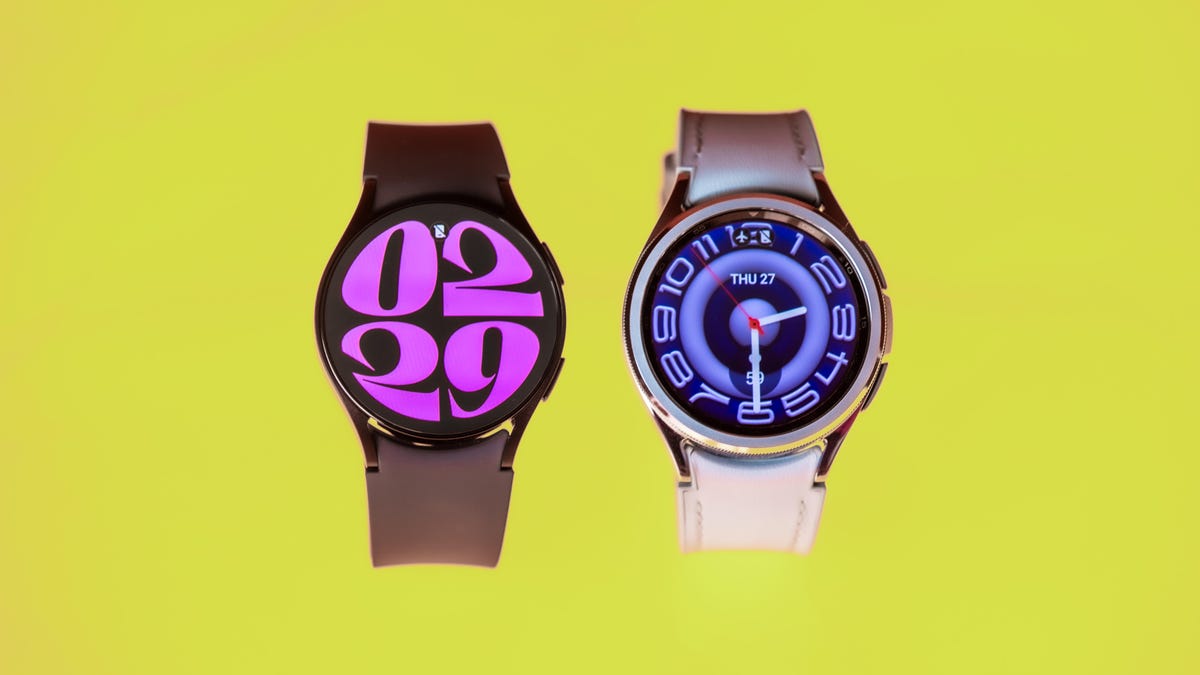
The Galaxy Watch 6 proves that what’s old can become new again. Samsung brought back the fan-favorite bezel on the Galaxy Watch 6 Classic, while the regular Galaxy Watch 6 is an incremental update to last year’s model. These Android smartwatches are not exciting, but they can do almost everything you need.
I’ve been wearing both versions for a week to track everything from workouts to sleep. Inside, they’re practically the same watch with the same internal specs, sensors and sizing options. I tested the small version of both: the 40mm Watch 6 and the 43mm Classic. (My wrist measures 152mm.) You can see how they fit in the video on this page.
The main differences between the Galaxy Watch 6 versions?
- Material: The Galaxy Watch 6 has an aluminum frame while the Galaxy Watch 6 Classic is stainless steel
- Rotating bezel: Only on the Galaxy Watch 6 Classic. The Galaxy Watch 6 has a haptic touch bezel around the screen
- Price: Starts at $300 for the 40mm Galaxy Watch 6 or $330 for the 44mm. The Galaxy Watch 6 Classic is $400 for the 43mm and $430 for the 47mm.
All the sensors on both are the same as the ones found on the Galaxy Watch 5: heart rate, body composition and skin temperature. Both the Watch 6 and 6 Classic have LTE options to stay connected when you’re away from your phone. They cost $50 more than the base price and you may need to pay an additional fee to your wireless provider to get service on your watch.
So, what’s different from last year? It’s as simple as software, screens and a slightly longer-lasting battery.
Better, brighter displays help you see more
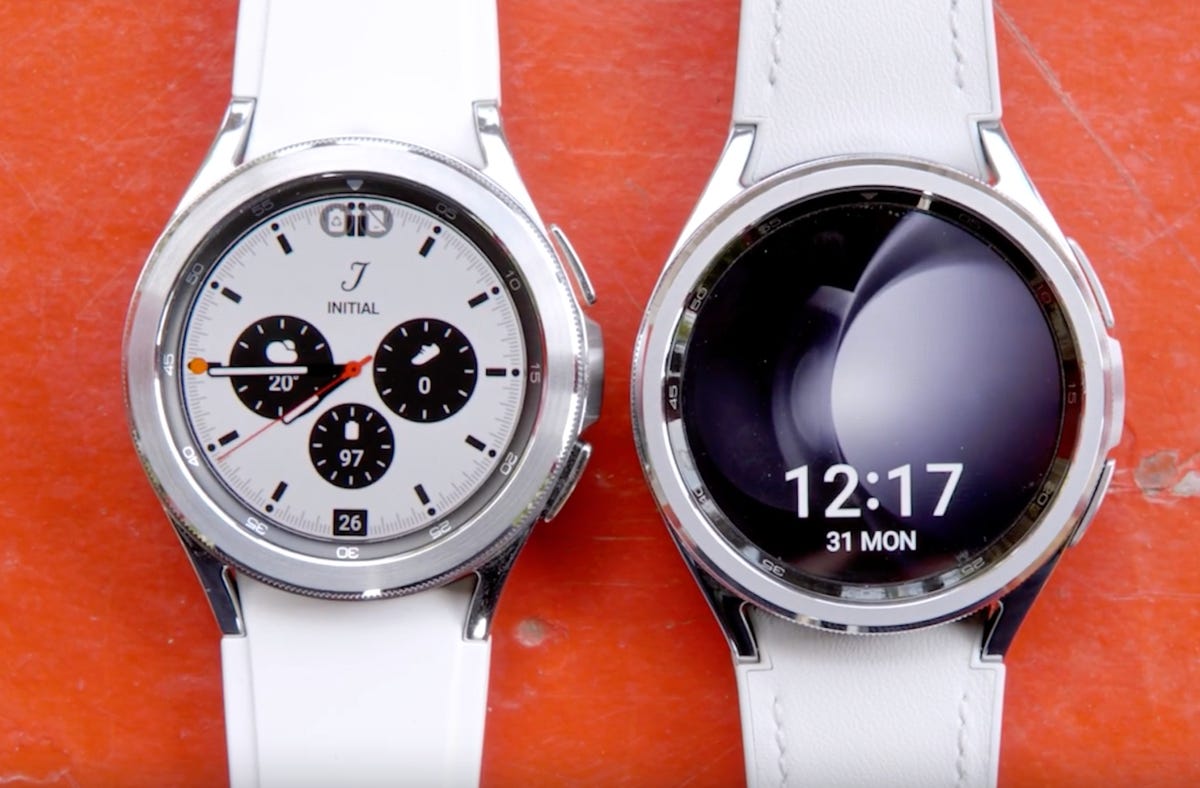
It seems like a small upgrade on paper, but the larger 1.3-inch and 1.5-inch displays make a significant difference to the overall experience. When I compare the Galaxy Watch 6 Classic directly with the Galaxy Watch 4 Classic (the last Samsung watch to have the bezel) the difference in usable display is night and day.
The screens are also twice as bright as the Galaxy Watch 5 and Pro, reaching a maximum 2,000 nits. I found them so much easier to see in sunlight. The always-on display is brighter too.
Galaxy Watch 6 Classic bezel makes the watch fun again
I love that Samsung listened to feedback and brought back the rotating bezel. Not only does it make navigation more fun, it’s a practical way to control the watch if you wear gloves, or have sweaty or wet fingers.
The bezel is also slimmer than the version we last saw on the Galaxy Watch 4 Classic. But it doesn’t do anything new and it should never have left. The regular Galaxy Watch 6 has a touch bezel around the edge of the screen. Move your finger around to get the same effect as the physical bezel.

I wonder what Samsung will do about the next Pro watch. I speculated the Galaxy Watch 5 Pro could have had a slimmer rotating bezel around the raised edge of the watch. Now Samsung makes a slimmer version, I hope we’ll see it on the Galaxy Watch 6 Pro.
One design perk I wasn’t expecting is the new one-click watch band design. No more fiddling with spring pin toggles! The new bands are also backwards and forwards-compatible and I appreciate that they sit closer to the watch frame. The hybrid leather band on the Classic is particularly comfortable for all-day wear.
Galaxy Watch 6 battery life: Only slightly better than the Watch 5
Samsung is more conservative with its battery life estimates this year, claiming the Galaxy Watch 6 can last up to 30 hours with the always-on display, or 40 hours with it turned off. That’s for both sizes of both watches, even though the larger case sizes have a higher-capacity battery at 425 mAh compared to 300 mAh on the smaller version.
I wasn’t quite able to reach those numbers. With the always-on, getting a handful of phone notifications, one 30-minute workout using GPS and sleep tracking, I hit 27 hours on the 43mm Galaxy Watch 6 Classic before it went flat.
With slightly heavier use, like streaming music over Bluetooth headphones and a longer outdoor workout using GPS, that runtime is closer to 24 hours. I suspect LTE use will drain the battery even faster and will update this review once I’ve been able to test. It takes over an hour to charge the watch from flat to full using the provided USB-C charger, or you can use reverse wireless charging on a Galaxy phone for a top-up.
If you want the longest-lasting battery, that’s still the $450 Galaxy Watch 5 Pro that lasts two-and-a-half to three days with similar use.
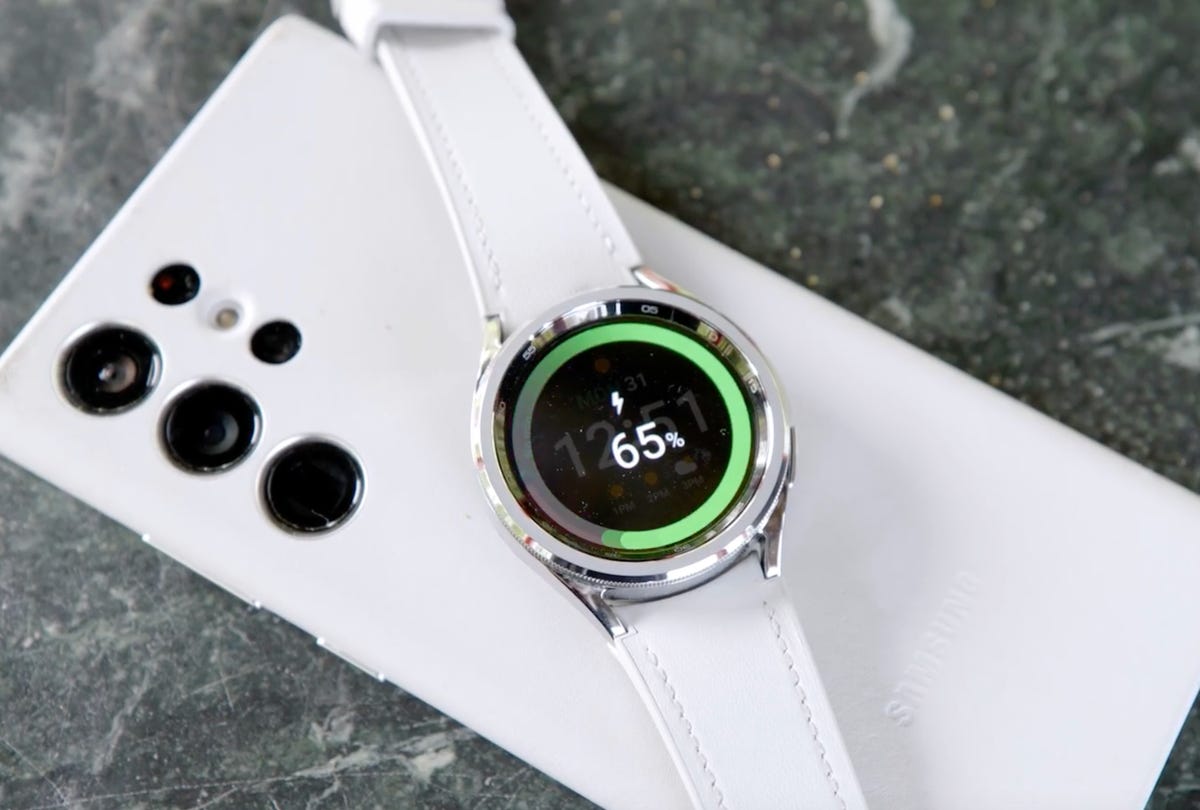
WearOS 4 and One UI 5 Watch: A good combo, but not complete
These are the first watches to run Wear OS 4. Some of the key updates promise better battery life and cloud backups. Apps like Gmail and Google Calendar will also come to the watch, but at the time of writing they aren’t available yet. Other Google apps like the Assistant and YouTube Music are there and WhatsApp now has a native Wear OS app.
They also run Samsung’s One UI 5 Watch on top of Wear OS 4 that brings Galaxy Watch-exclusive features including:
- Sleep insights and sleep coaching
- Personalized heart rate zones
- Emergency SOS can send your location when it detects a fall
- Fall detection active automatically for users over 55

Know that the Galaxy Watch 4 and 5 will get the One UI 5 update later in the year. Other interface tweaks include a bigger keyboard, so typing is a little easier than the Galaxy Watch 5. Voice to text dictation works as well as it did before. But my favorite feature so far is that you don’t need to reset your watch when you switch to a new phone.
If you have a Flip 5 or Fold 5, you can control the camera in Flex mode from your wrist, but I found it was a bit laggy. Don’t feel left out if you have an older Galaxy phone: The camera controller still works. I tested it with the Galaxy S22 Ultra and got camera controls like zooming with the bezel, without the lag.
Universal gestures is a lesser-known accessibility feature that should get more attention because it works really well. Just like the Assistive Touch on the Apple Watch, you can control the Galaxy Watch 6 with gestures if you can’t touch the screen or press buttons.

Health, fitness and sleep is pretty much the same
The Galaxy Watch 6 has a few new fitness tools like a new track run workout type and the option to create custom workouts. Samsung quietly added back automatic cycling detection after it disappeared from the Galaxy Watch 4 and 5. The Galaxy Watch 6 still auto-detects activities like walks, runs, rowing machine and elliptical after about 10 minutes.
New to Samsung watches are personalized heart rate zones. They can help you train more effectively by helping you stay within a range based on your aerobic capabilities. To calculate custom heart rate zones, do a minimum 10-minute outdoor run at 4 kilometers per hour or faster. Then go into Settings > HR Zone Guide > Target HR zone. This feature also exists on the Apple Watch and Fitbit.
Sleep tracking features bring the watch up to speed with what other watches on the market offer, specifically the Pixel Watch and Fitbit. You can now see your sleep score on the watch and the corresponding sleep animals are cute. But they’ve been available on the Galaxy Watch 4 since early 2022. It will take more time to see if the Galaxy Watch 6 sleep coaching tips are helpful in the long term and if they’re any different from previous watches. I’ll update this review after several weeks with the final verdict.
Like other wearables, the Galaxy Watch 6 can check your blood oxygen readings while you sleep, but it’s the only smartwatch I’ve worn for sleep tracking that gives me very low blood oxygen readings overnight, sometimes as low as 87%. Low blood oxygen readings can indicate medical conditions like sleep apnea. Activating sleep mode is also supposed to turn on an invisible infrared sensor instead of using the green LED for heart rate, though I noticed when I woke up during the night, the green light was visible. I’ve reached out to Samsung for clarification on this feature.
The Galaxy Watch 6 has an ECG and now supports irregular heart rhythm notifications, like the Apple Watch and Fitbit, but only if you have a Galaxy phone. You can sideload the Samsung Health Monitor app on other Android phones by installing an APK, but technically it’s not supported.
I tested the heart rate monitor against a chest strap for accuracy and found that my resting heart rate matched up. During a cardio workout, the sensor was within a few bpm of the strap. Like last year’s watch, the GPS locked on to a signal within seconds of starting an outdoor workout and route accuracy is good.
Finally, the skin temperature sensor tracks during overnight sleep and can also be used to predict upcoming menstrual cycles.
Should you upgrade to the Galaxy Watch 6?
That depends. If you have a Galaxy Watch 4 or 5 it doesn’t make much sense unless you get a fantastic trade-in deal, or you really want that bigger screen. You get all the main software updates with One UI 5 Watch later in the year anyway.
If you have an earlier Galaxy or Gear watch that runs Tizen, the upgrade is more tempting as you’re getting access to Wear OS and the option to keep the beloved bezel.
But the Galaxy Watch 6 has a lot more competition than last year, thanks to the likes of the Pixel Watch and Mobvoi’s TicWatch 5 Pro. The Galaxy Watch 6 is one of the most refined Android smartwatches, but it could be a lot more exciting, especially when it comes to battery life.
Galaxy Watch 6 vs. 6 Classic
| Samsung Galaxy Watch 6 | Samsung Galaxy Watch 6 Classic | |
| Shape | Round | Round |
| Watch size | 40mm, 44mm | 43mm, 47mm |
| Materials/Finishes | Aluminum | Stainless Steel |
| Display size, resolution | 40mm: 1.3 inch, 432×432 pixels, Super AMOLED; 44mm: 1.5 inch, 480×480 pixels, Super AMOLED | 43mm: 1.3 inch, 432×432 pixels, Super AMOLED; 47mm: 1.5 inch, 480×480 pixels, Super AMOLED |
| Dimensions | 40mm: 38.8×40.4×9.0 mm; 44mm: 42.8×44.4×9.0 mm | 43mm: 42.5×42.5×10.9 mm; 47mm: 46.5×46.5×10.9 mm |
| Weight | 40mm: 28.7g; 44mm: 33.3g | 43mm: 52g; 47mm: 59g |
| Colors | 40mm: graphite, gold ;44mm: graphite, silver | 43mm: black, silver; 47mm: black, silver |
| Always On | Yes | Yes |
| Interchangeable bands | Yes | Yes |
| GPS | Yes | Yes |
| Automatic workout detection | Yes | Yes |
| Compass | Yes | Yes |
| Altimeter | Yes | Yes |
| Water resistance | 5ATM, IP68 | 5ATM, IP68 |
| Calls | Yes | Yes |
| Microphone | Yes | Yes |
| Speaker | Yes | Yes |
| Voice assistant | Yes (Google Assistant, Bixby) | Yes (Google Assistant, Bixby) |
| Mobile Payments | Yes (Samsung Wallet) | Yes (Samsung Wallet) |
| Sleep tracking | Yes | Yes |
| Period tracking | Yes | Yes |
| Sensors | Optical heart rate + electrical heart signal + bioelectrical impedance analysis, temperature sensor, accelerometer, barometer, gyro sensor, geomagnetic sensor, light sensor | Optical heart rate + electrical heart signal + bioelectrical impedance analysis, temperature sensor, accelerometer, barometer, gyro sensor, geomagnetic sensor, light sensor |
| Emergency features | Emergency SOS, fall detection | Emergency SOS, fall detection |
| Compatibility | Android 10 and above | Android 10 and above |
| Software | WearOS 4 | WearOS 4 |
| Processor | Exynos W930 dual-core 1.4GHz | Exynos W930 dual-core 1.4GHz |
| Connectivity | LTE6, Bluetooth 5.3, Wi-Fi 2.4+5GHz, NFC, GPS/Glonass/Beidou/Galileo | LTE6, Bluetooth 5.3, Wi-Fi 2.4+5GHz, NFC, GPS/Glonass/Beidou/Galileo |
| Memory and storage | 2GB memory + 16GB storage | 2GB memory + 16GB storage |
| Charging | Fast charging (WPC-based wireless charging) | Fast charging (WPC-based wireless charging) |
| Battery life | Up to 40 hours (Always On Display off); up to 30 hours (Always On Display on) | Up to 40 hours (Always On Display off); up to 30 hours (Always On Display on) |
| Battery capacity | 40mm: 300 mAh; 44mm: 425 mAh | 43mm: 300 mAh; 47mm: 425 mAh |
| Price (USD) | 40mm: $300 (Wi-Fi, Bluetooth); 44mm: $330 (Wi-Fi, Bluetooth) | 43mm: $400 (Wi-Fi, Bluetooth); 47mm: $430 (Wi-Fi, Bluetooth) |
Technologies
Today’s NYT Mini Crossword Answers for Friday, May 23
Here are the answers for The New York Times Mini Crossword for May 23.
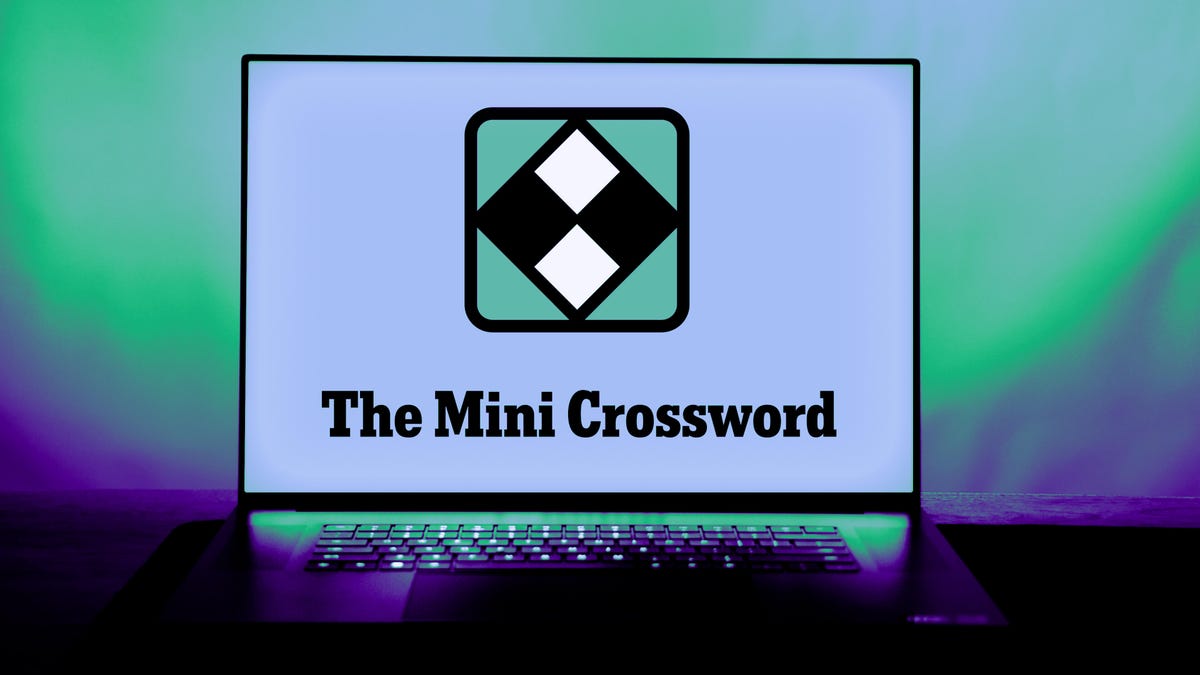
Looking for the most recent Mini Crossword answer? Click here for today’s Mini Crossword hints, as well as our daily answers and hints for The New York Times Wordle, Strands, Connections and Connections: Sports Edition puzzles.
Today’s NYT Mini Crossword isn’t too tough. Lots of similar clues ask you to solve for a certain word, and then add a Y. Need some help with today’s Mini Crossword? Read on. And if you could use some hints and guidance for daily solving, check out our Mini Crossword tips.
The Mini Crossword is just one of many games in the Times’ games collection. If you’re looking for today’s Wordle, Connections, Connections: Sports Edition and Strands answers, you can visit CNET’s NYT puzzle hints page.
Read more: Tips and Tricks for Solving The New York Times Mini Crossword
Let’s get at those Mini Crossword clues and answers.
Mini across clues and answers
1A clue: Chooses to receive marketing emails, with «in»
Answer: OPTS
5A clue: Buck ___, first Black coach in Major League Baseball (1962)
Answer: ONEIL
6A clue: Like your epidermis?
Answer: SKINNY
7A clue: Like the element Fe?
Answer: IRONY
8A clue: Quite a lot of
Answer: MANY
Mini down clues and answers
1D clue: Bulb in the kitchen
Answer: ONION
2D clue: Like an ink-filled writing tool?
Answer: PENNY
3D clue: Microscopic
Answer: TINY
4D clue: Acting deviously
Answer: SLY
5D clue: Green gumbo ingredient
Answer: OKRA
6D clue: ___ card (smartphone chip)
Answer: SIM
How to play more Mini Crosswords
The New York Times Games section offers a large number of online games, but only some of them are free for all to play. You can play the current day’s Mini Crossword for free, but you’ll need a subscription to the Times Games section to play older puzzles from the archives.
Technologies
Today’s NYT Connections: Sports Edition Hints and Answers for May 23, #242
Hints and answers for the NYT Connections: Sports Edition puzzle, No. 242, for May 23.
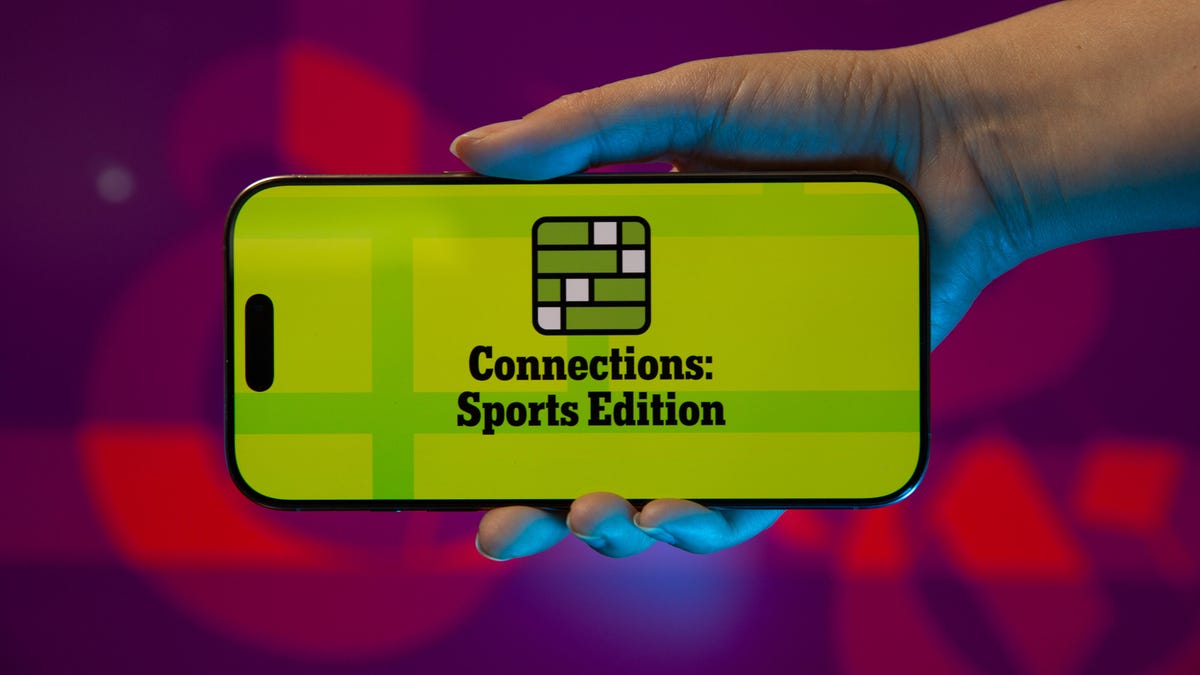
Looking for the most recent regular Connections answers? Click here for today’s Connections hints, as well as our daily answers and hints for The New York Times Mini Crossword, Wordle and Strands puzzles.
Connections: Sports Edition might be tough today. Read on for hints and the answers.
Connections: Sports Edition is out of beta now, making its debut on Super Bowl Sunday, Feb. 9. That’s a sign that the game has earned enough loyal players that The Athletic, the subscription-based sports journalism site owned by the Times, will continue to publish it. It doesn’t show up in the NYT Games app but now appears in The Athletic’s own app. Or you can continue to play it free online.
Read more: NYT Connections: Sports Edition Puzzle Comes Out of Beta
Hints for today’s Connections: Sports Edition groups
Here are four hints for the groupings in today’s Connections: Sports Edition puzzle, ranked from the easiest yellow group to the tough (and sometimes bizarre) purple group.
Yellow group hint: Which year are you?
Green group hint: College conference.
Blue group hint: LA hoops stars.
Purple group hint: Football hometowns.
Answers for today’s Connections: Sports Edition groups
Yellow group: College student classifications.
Green group: Big 12 schools.
Blue group: Lakers in the Basketball Hall of Fame.
Purple group: NFL team locations.
Read more: Wordle Cheat Sheet: Here Are the Most Popular Letters Used in English Words
What are today’s Connections: Sports Edition answers?
The yellow words in today’s Connections
The theme is college student classifications. The four answers are freshman, sophomore, junior and senior.
The green words in today’s Connections
The theme is Big 12 schools. The four answers are Colorado, TCU, Texas Tech and West Virginia.
The blue words in today’s Connections
The theme is Lakers in the Basketball Hall of Fame. The four answers are Baylor, O’Neal, West and Worthy.
The purple words in today’s Connections
The theme is first words in NFL team locations. The four answers are Green, Kansas, New and San.
Technologies
Yes, an Elden Ring Live-Action Movie Directed by Alex Garland Is Coming
No details or release date, but boy will it be cool to see Malenia wipe the floor with someone else for a change.
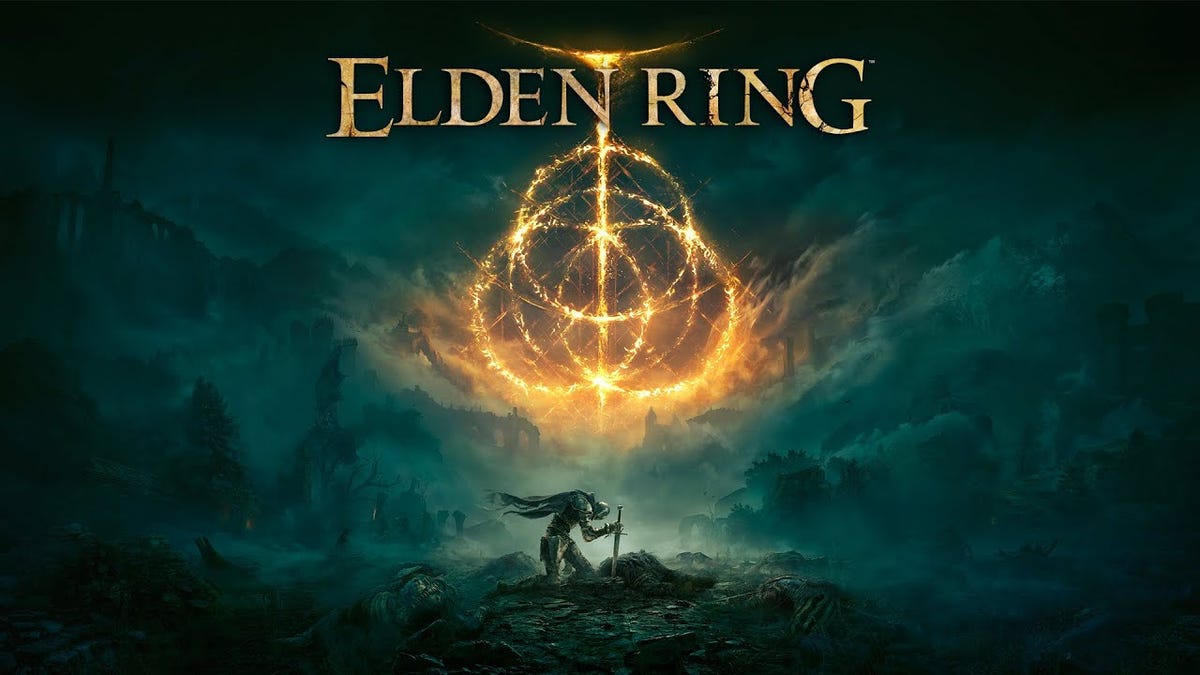
Unbelievably, the rumors were true: Alex Garland is indeed set to write and direct a live-action film adaptation of Elden Ring, FromSoftware’s phenomenally successful and difficult video game. Award-winning producer and distributor A24 will work with Garland on the movie.
The dark fantasy Elden Ring is one of the best-selling games of all time, wowing players with its tight gameplay, expansive world and compelling yet cryptic lore, so it’s no surprise that it’s headed for the silver screen. Its epic storyline, written in part by A Game of Thrones author George R. R. Martin, could work well for a film — but it’s also a safe bet that many owners of the 30 million Elden Ring sales would go to see it, too.
Rumors had swirled that Alex Garland was adapting the game to film weeks ago, per Comic Book Resources, which seemed like an odd choice. But the director’s prior adaptations of nerd properties, from the gritty pulp dystopia of Dredd to the gnostic science fiction of Annihilation, could suit him to take on Elden Ring’s dark fantasy world.
Better still is Garland’s experience with A24, which has led to several of the director’s most compelling visions on celluloid. They first paired up for 2015’s Ex Machina, followed by 2022’s gender parable Men and the bleakly topical Civil War last year, and finally the Iraq War drama Warfare released last month.
There’s no release date or other details for Garland’s Elden Ring. But fans of the game won’t have to wait long to get another fix of their favorite game — its multiplayer spinoff, Elden Ring Nightreign, is coming out on May 30.
-

 Technologies2 года ago
Technologies2 года agoTech Companies Need to Be Held Accountable for Security, Experts Say
-

 Technologies2 года ago
Technologies2 года agoBest Handheld Game Console in 2023
-

 Technologies2 года ago
Technologies2 года agoTighten Up Your VR Game With the Best Head Straps for Quest 2
-

 Technologies4 года ago
Technologies4 года agoVerum, Wickr and Threema: next generation secured messengers
-

 Technologies4 года ago
Technologies4 года agoGoogle to require vaccinations as Silicon Valley rethinks return-to-office policies
-

 Technologies4 года ago
Technologies4 года agoBlack Friday 2021: The best deals on TVs, headphones, kitchenware, and more
-

 Technologies4 года ago
Technologies4 года agoOlivia Harlan Dekker for Verum Messenger
-

 Technologies4 года ago
Technologies4 года agoiPhone 13 event: How to watch Apple’s big announcement tomorrow



